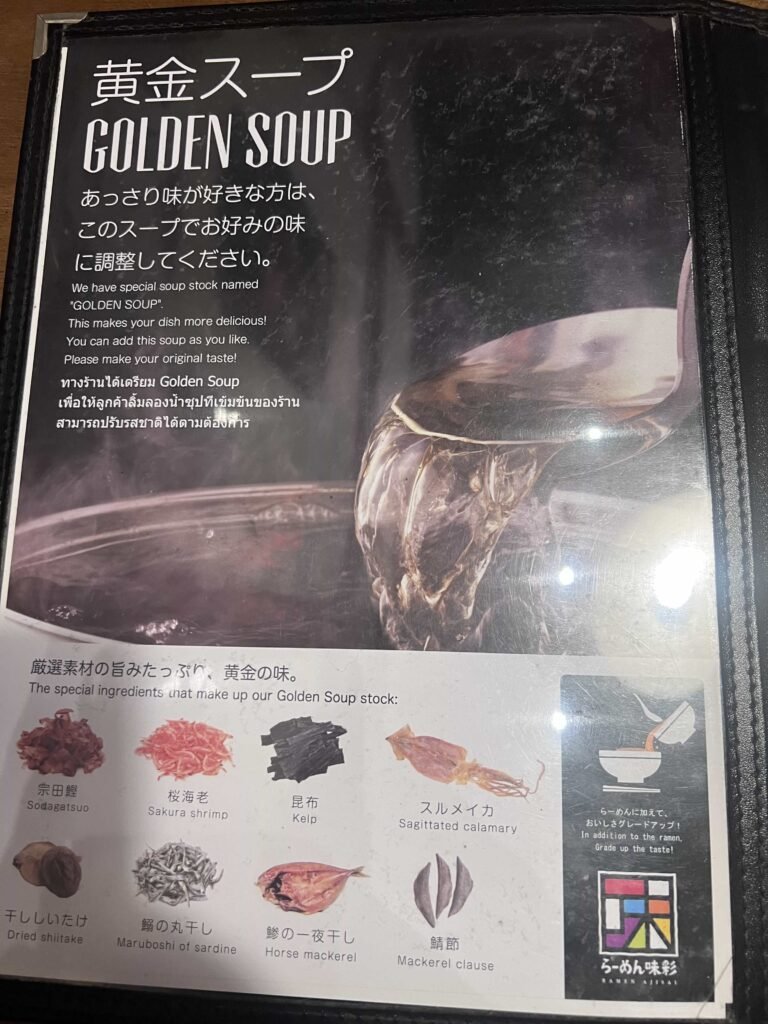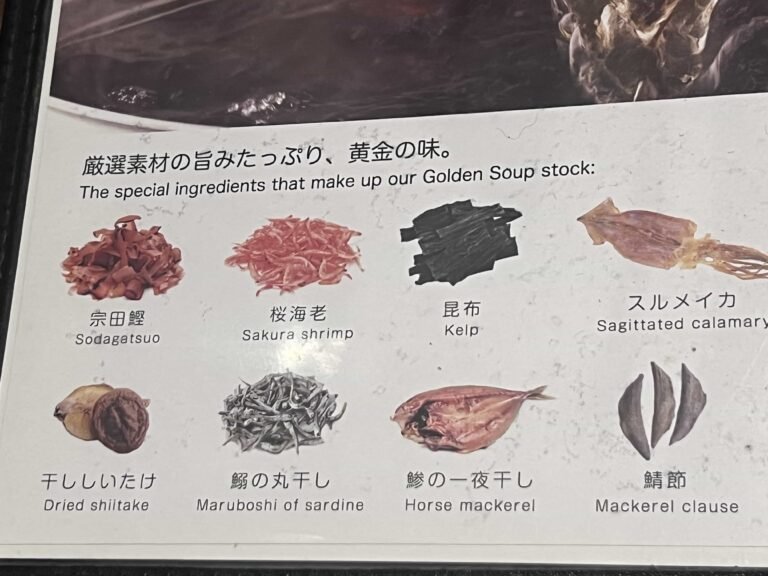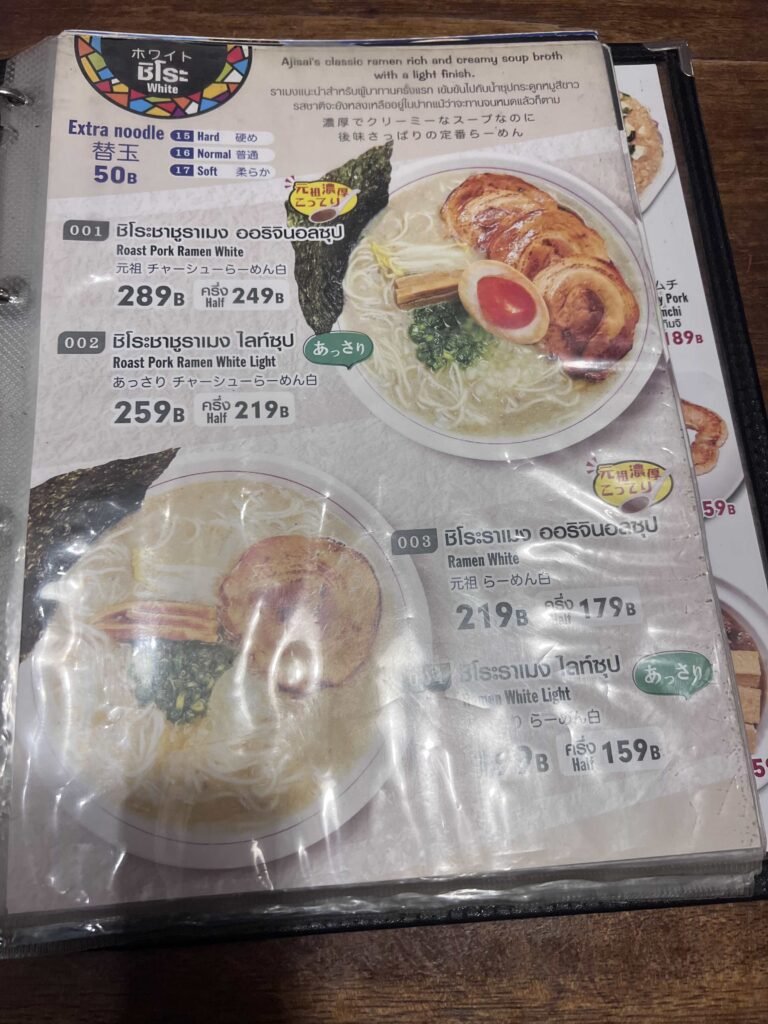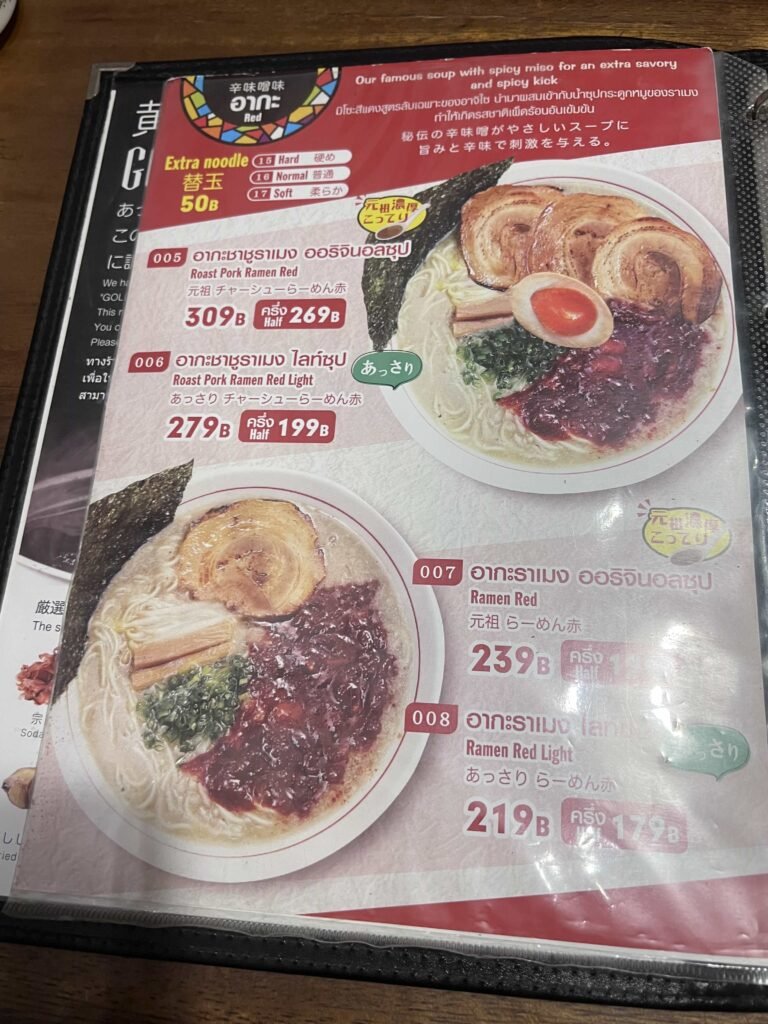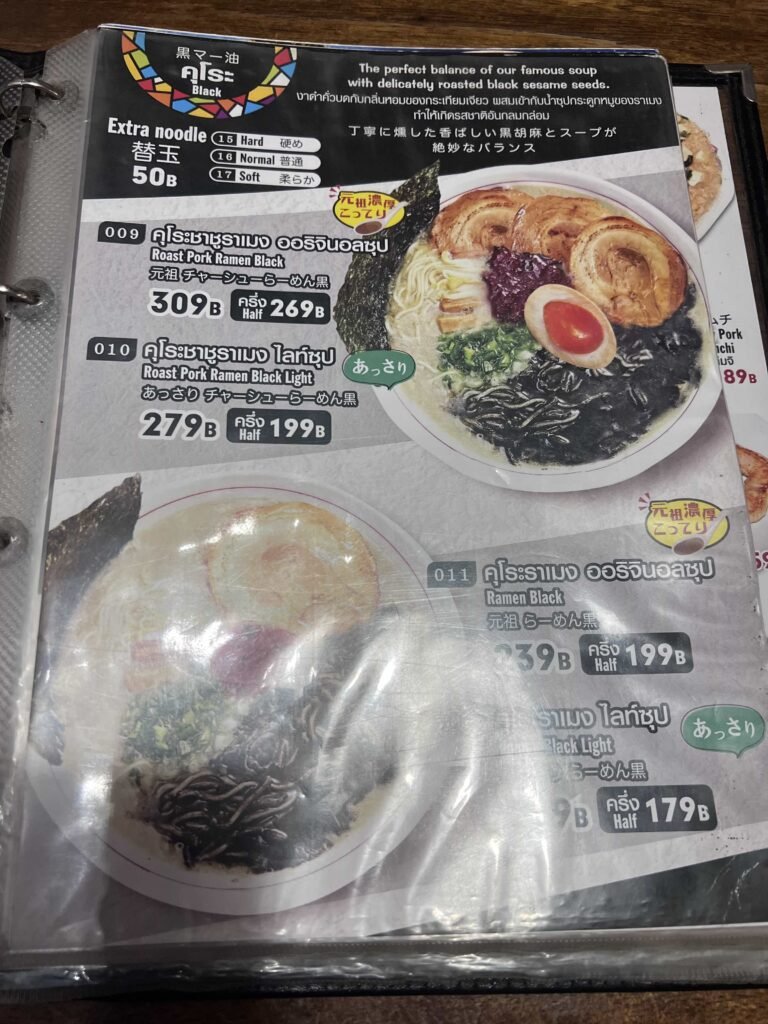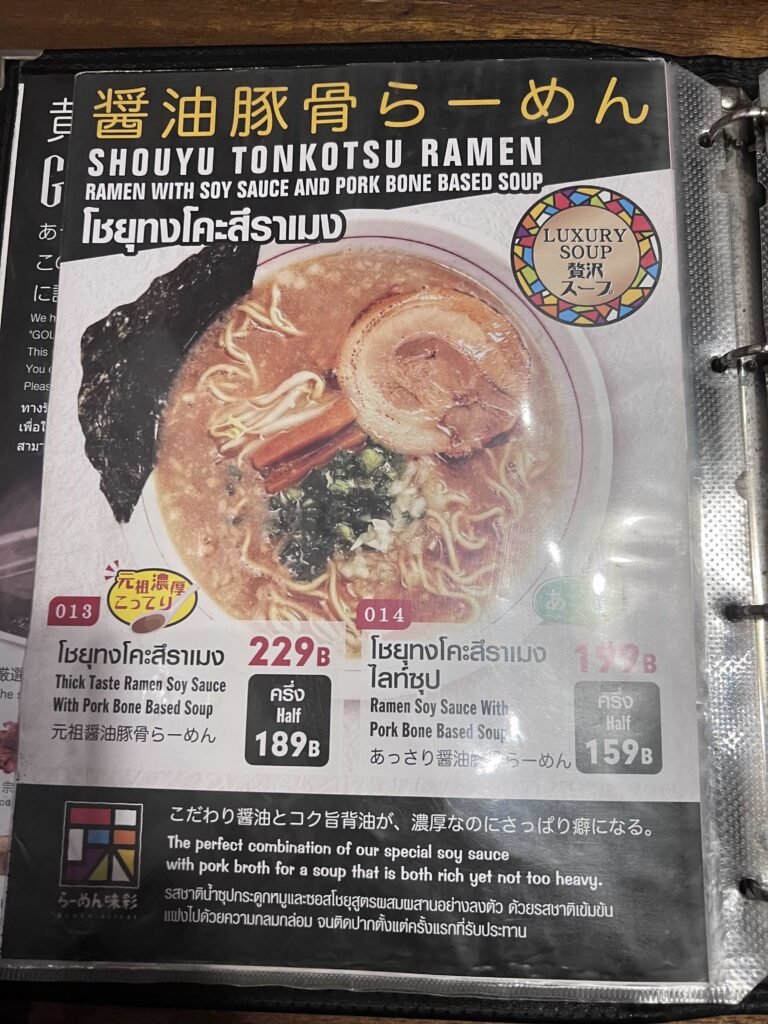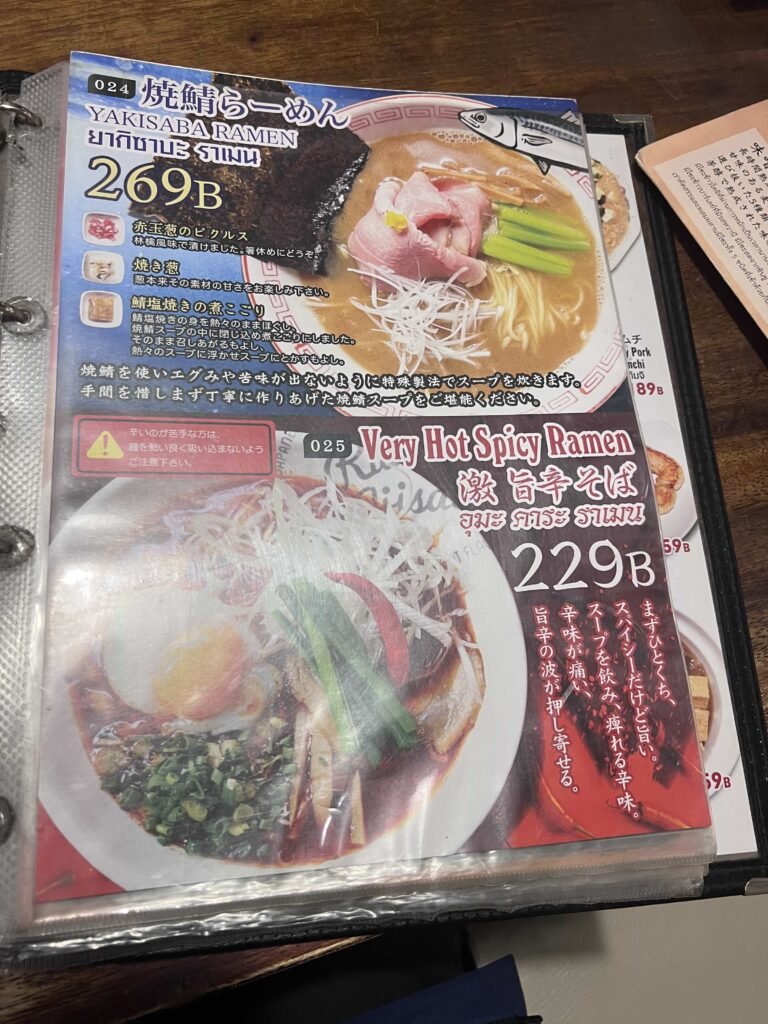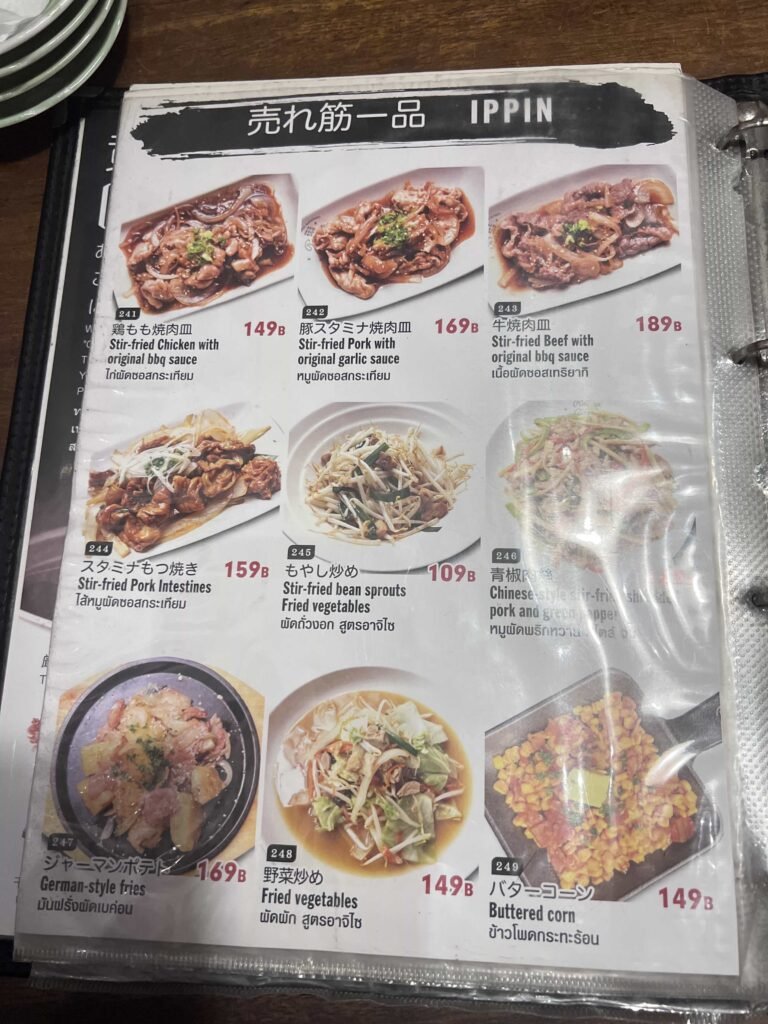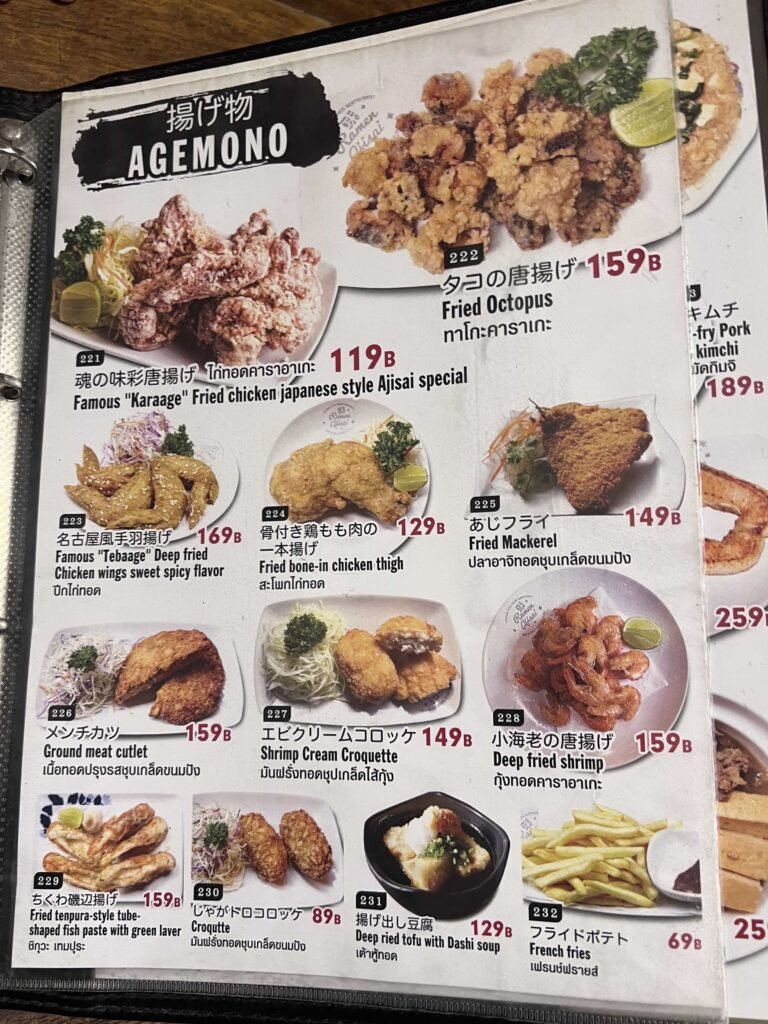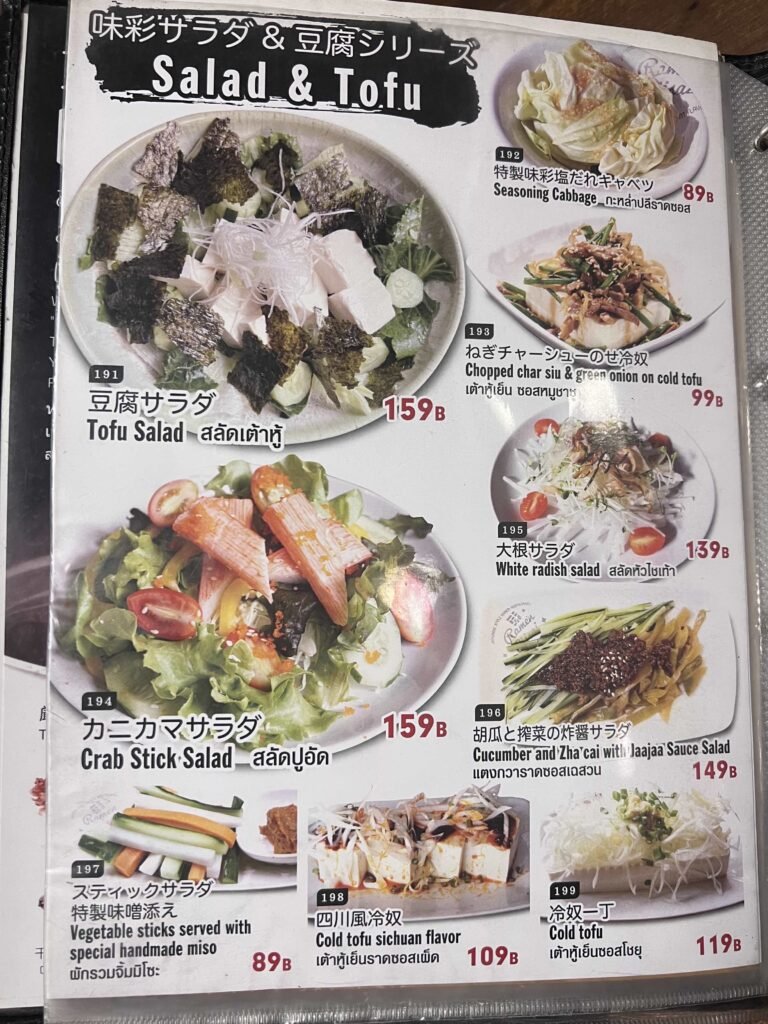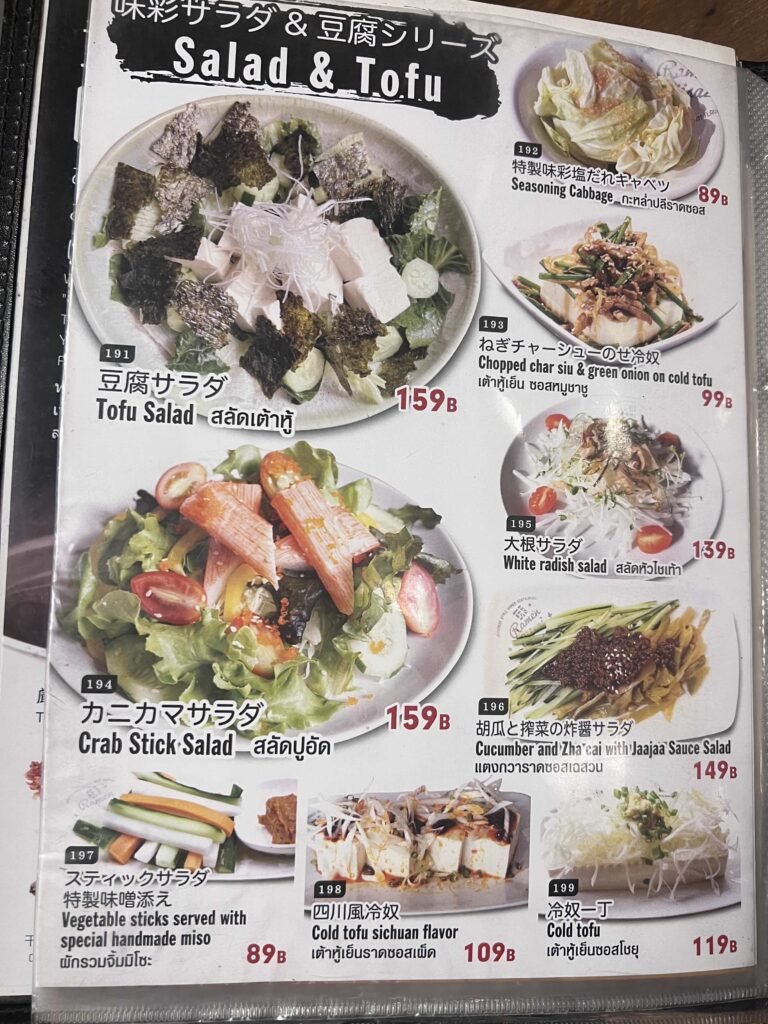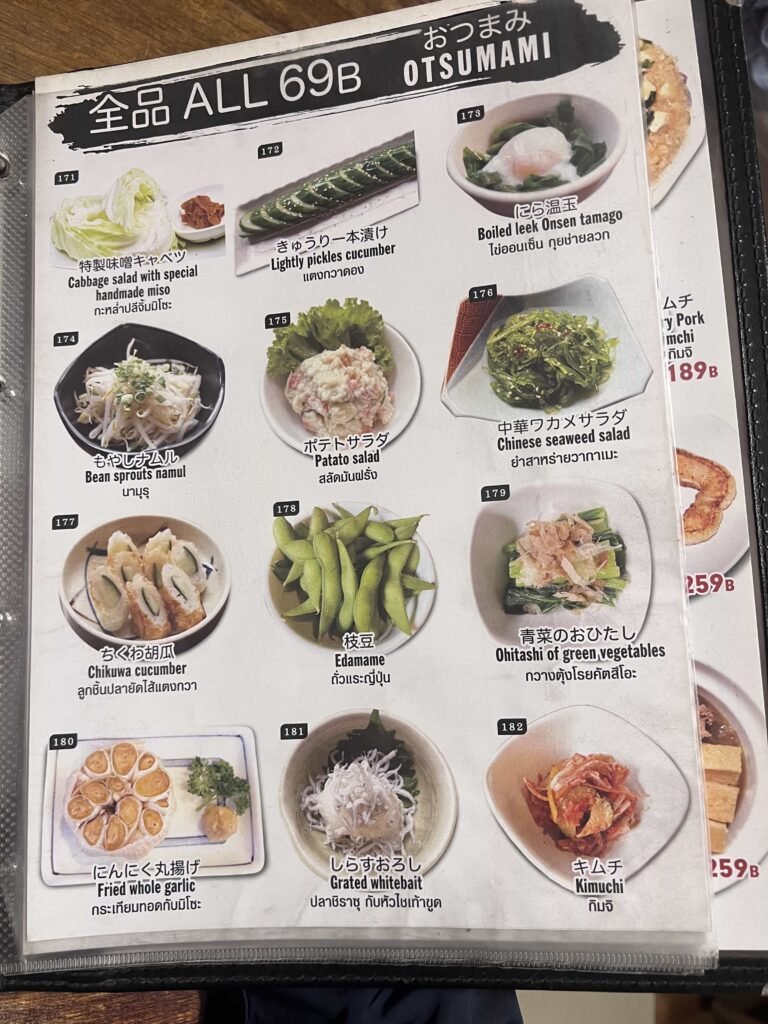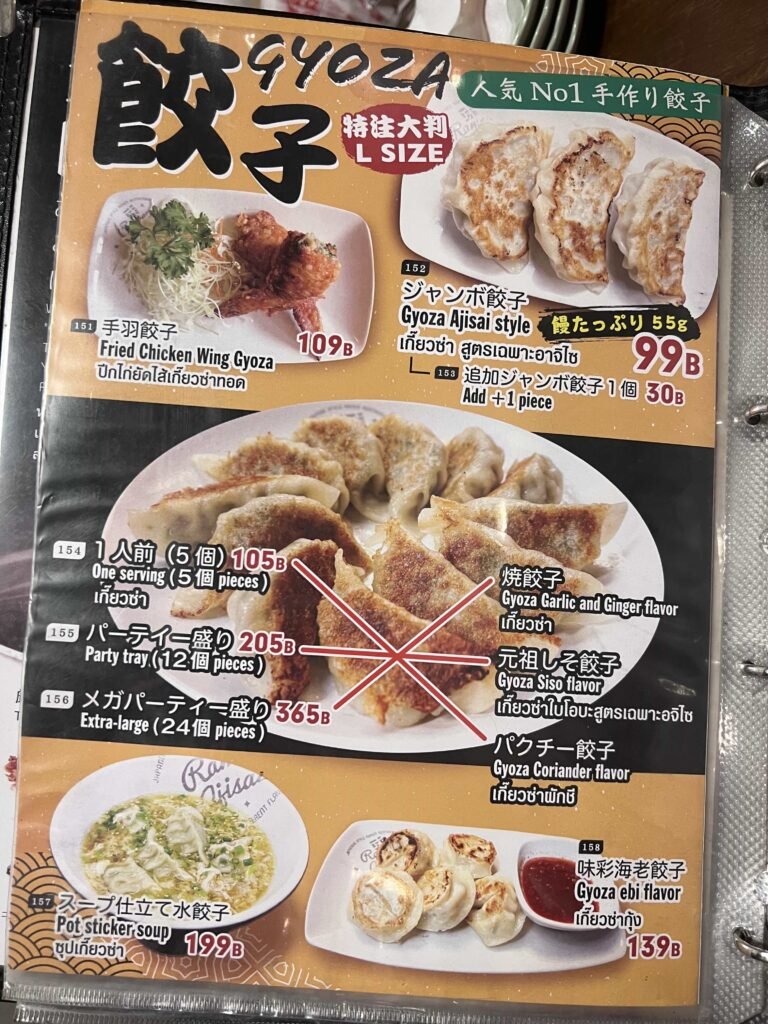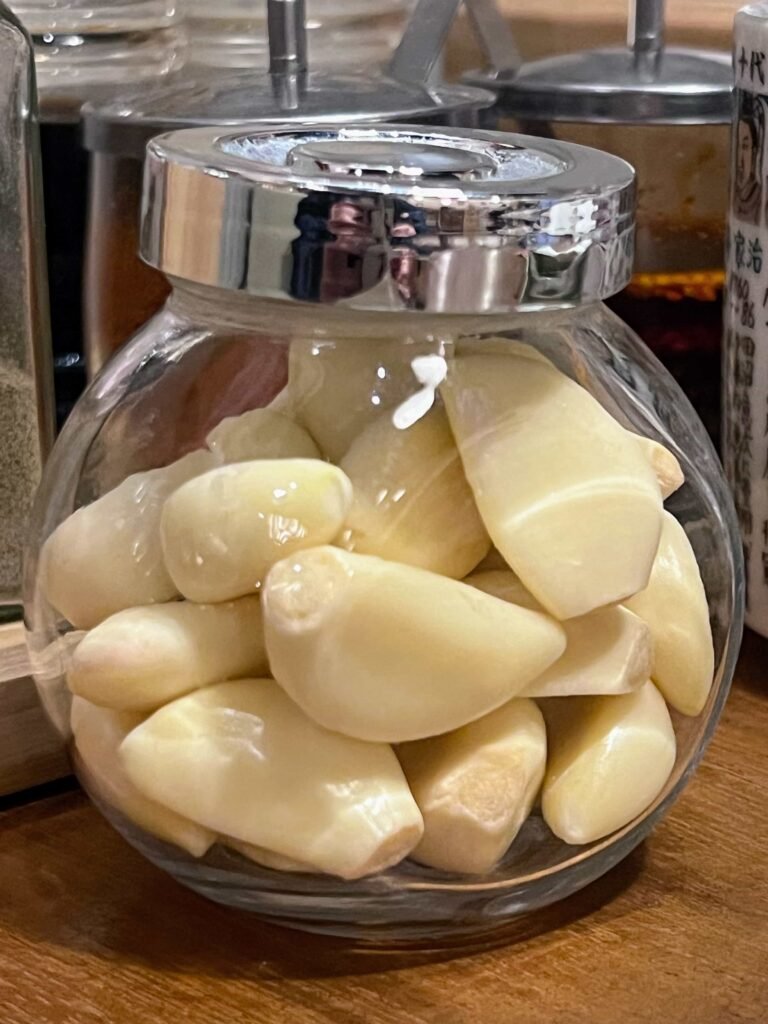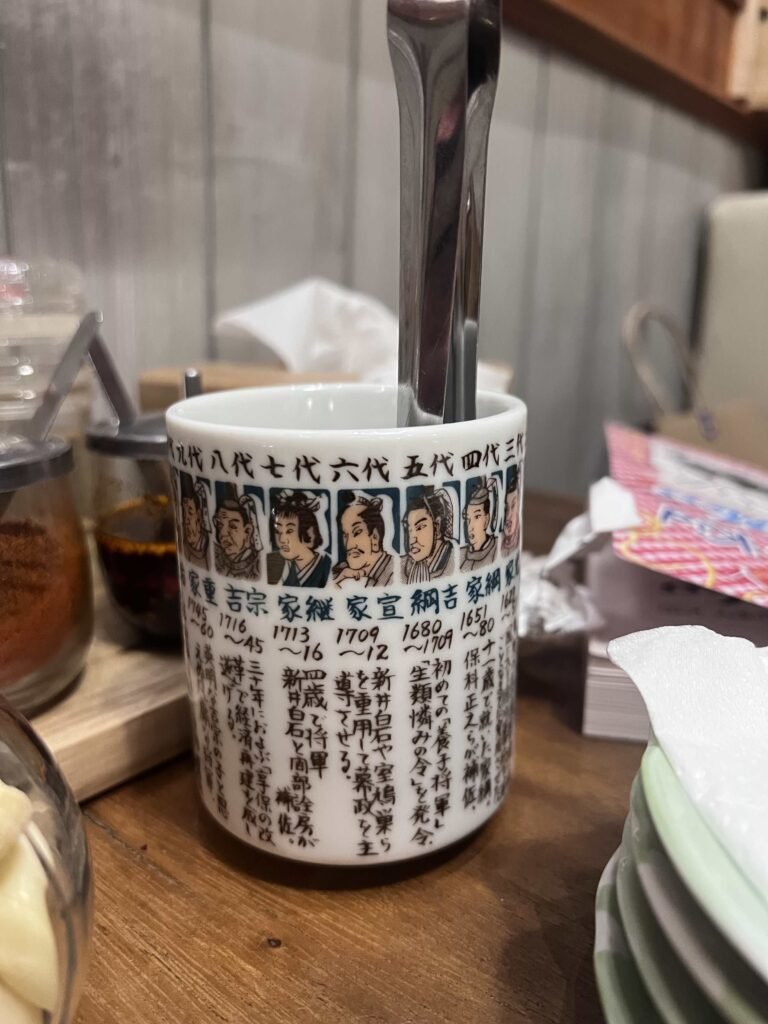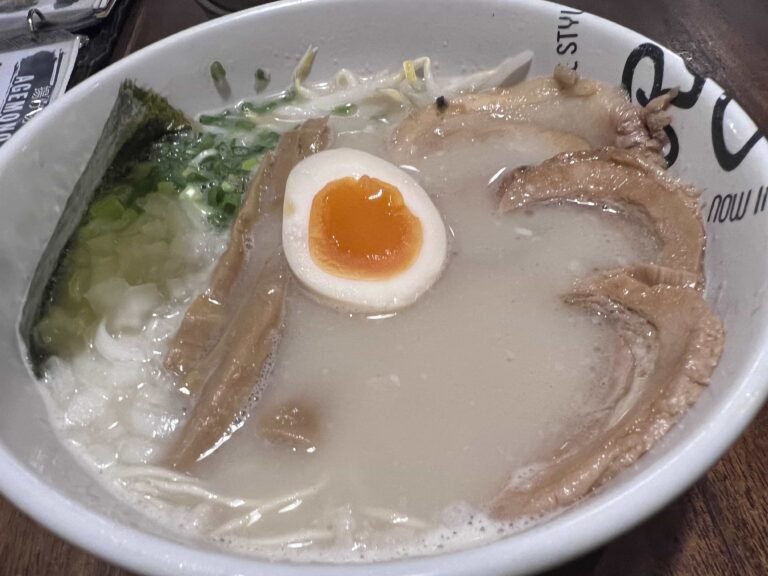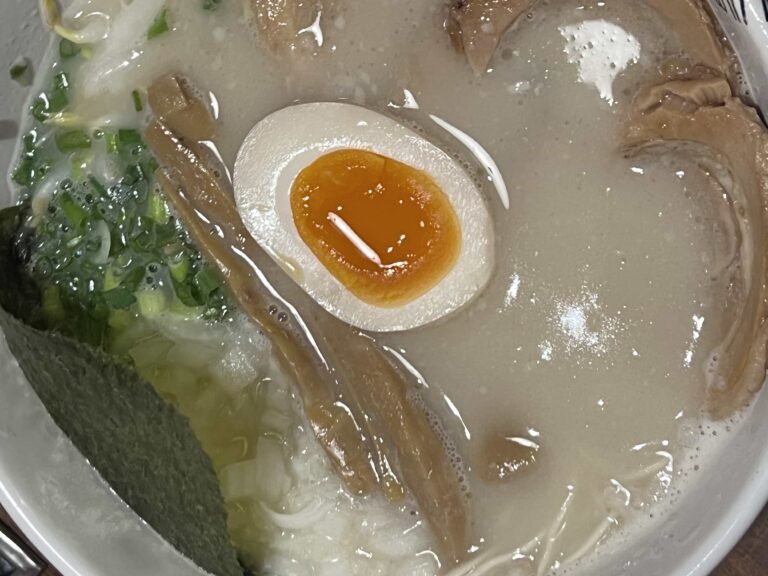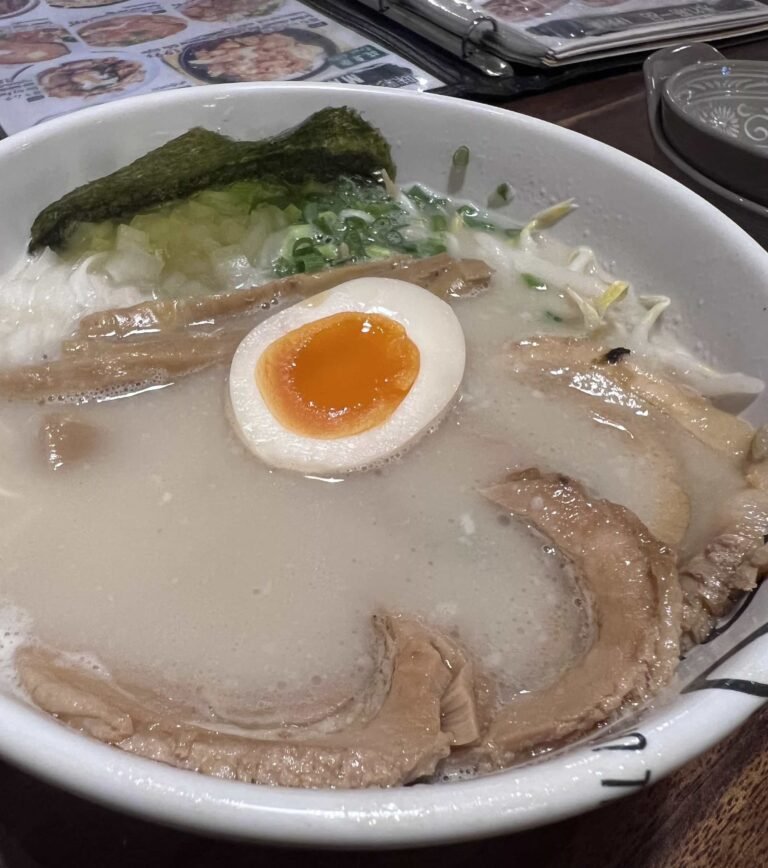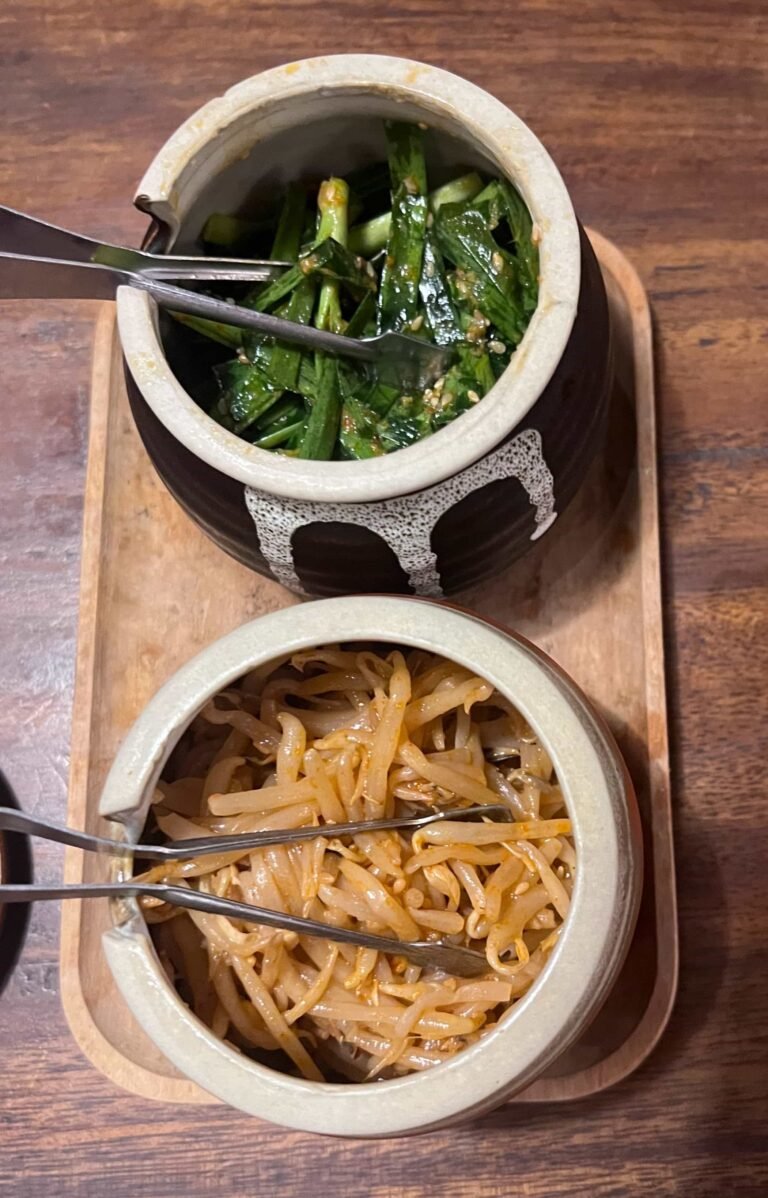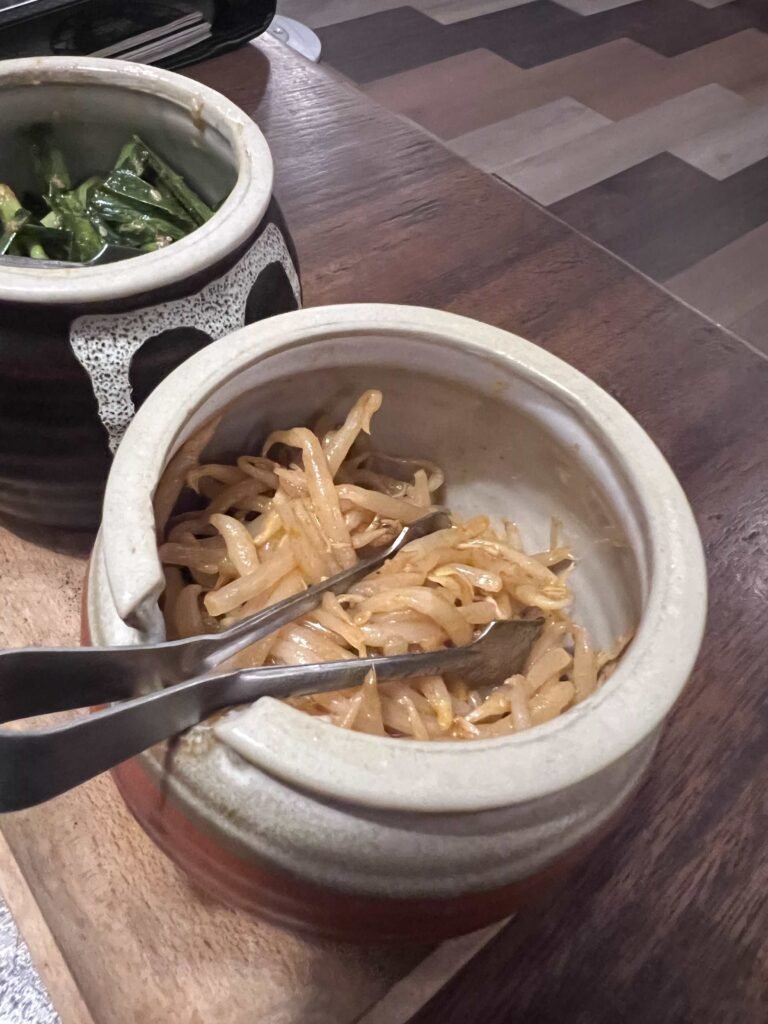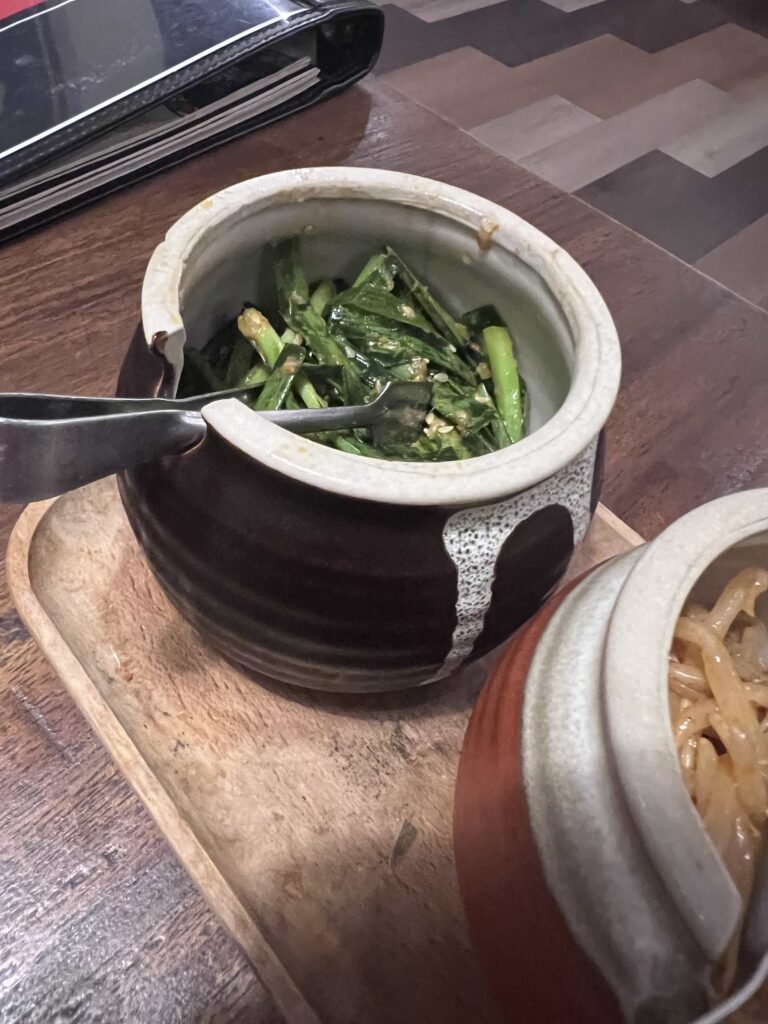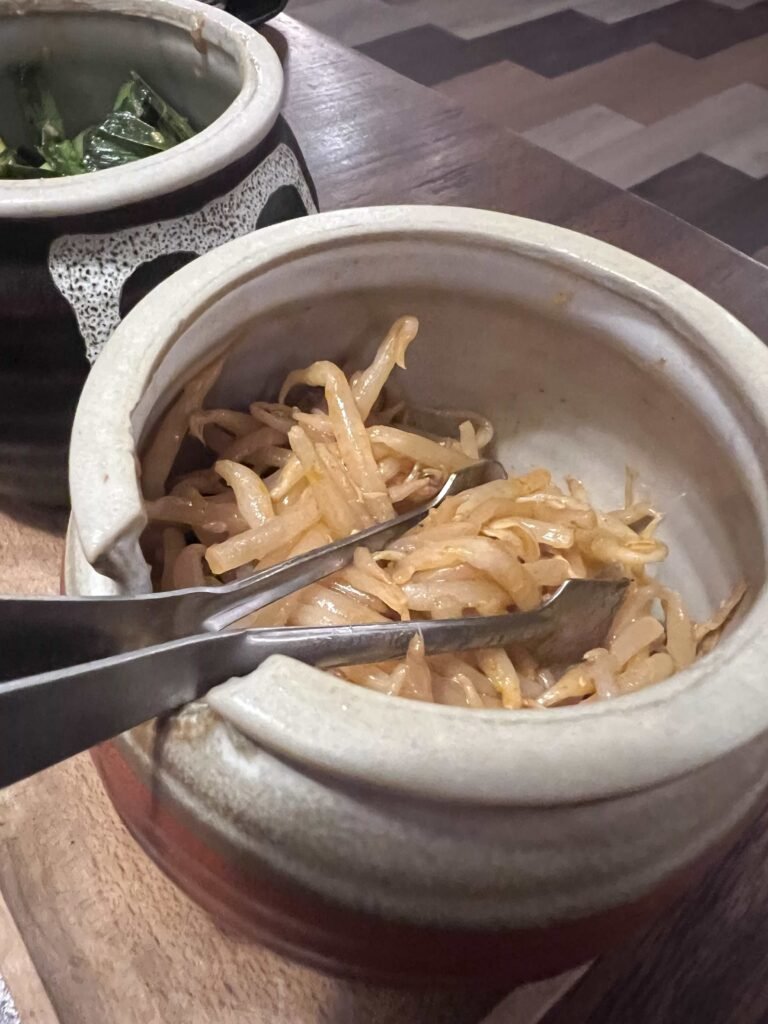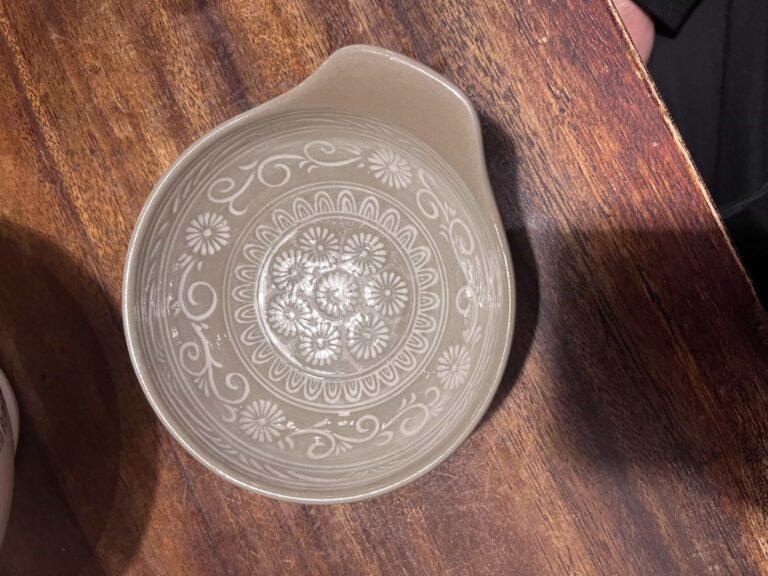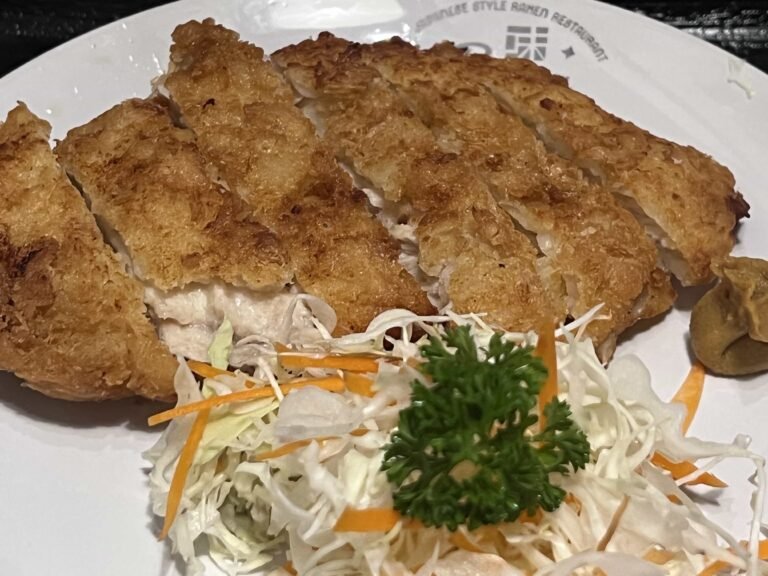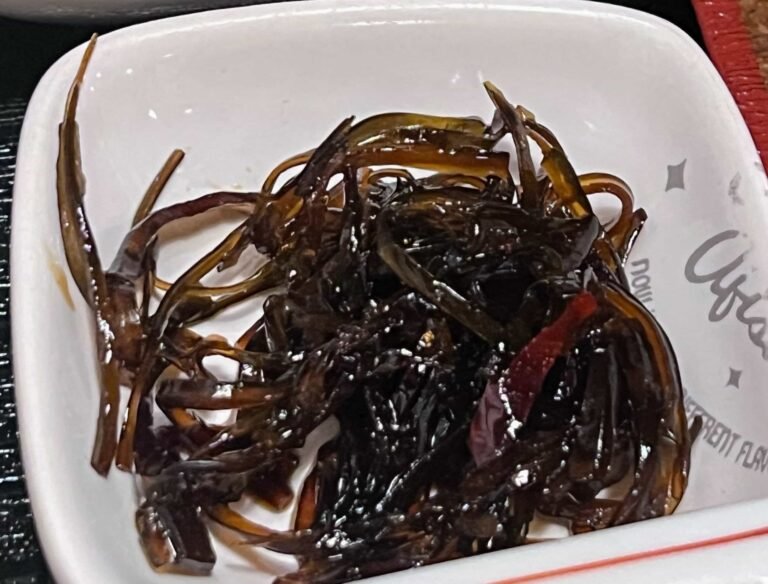Ramen Ajisai Saphan Khwai
This is one of the shops that are an indication that times are changing in the Saphan Khwai area. A few years ago, you could only dream of having this quality of Japanese food here. Fortunately, Ramen Ajisai, which opened their first branch in Bangkok in Sukhumvit Soi 23 in 2014, is now also present here in Saphan Khwai, directly located at BTS Saphan Khwai: ราเมง อาจิไซ สะพานควาย. My fellow Saphan Khwaians and friends of slow-simmered broth and delicate shio seasoning, rejoice!
This Ramen shops sits half hidden behind the stairs. The exterior seems almost a bit neglected, covered by the thick layer of unavoidable traffic dust that’s typical for “under the BTS Saphan Khwai”. The neon signage on the outside is half defunct too, adding to that sense of carelessness, and so I walked by here dozens of times, unfairly dismissing the place. Boy am I glad I eventually gave it a shot.
Let’s get straight to the good stuff:
Roast Pork Ramen White
元祖チャーシューらーめん白, Menu number 001
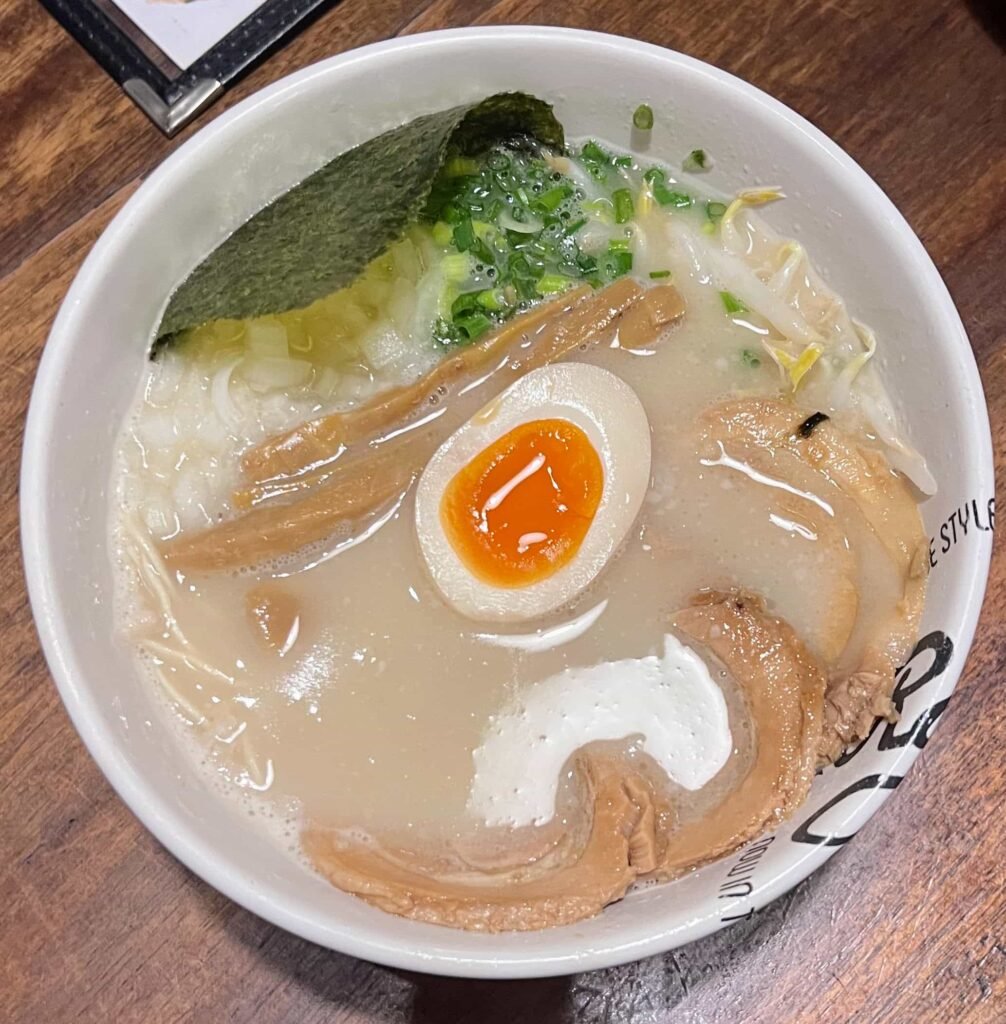
The classic ramen comes with a rich and creamy, slow-simmered pork bone broth (tonkotsu) and a light finish. The “Roast Pork Ramen White” is an excellent choice if you don’t know what to go for. It is essentially their signature bowl, representing the restaurant’s original style and philosophy.
Why is it called “White”? The “White” (白, shiro) refers to the white tonkotsu broth, made by simmering pork bones, cartilage, and aromatics for many hours until the soup turns cloudy, silky, and milky white with lots of collagen. If their broth is too thick or salty for your taste, you can dilute it with their free dashi (aka “Golden Soup”). For me, that was absolutely not necessary though, and honestly if anything I find that the soup is erring cautiously on the site of too little saltiness (which we as diners can easily adjust through the available condiments and sauces).
Flavor Profile
-
Base: Tonkotsu — deeply savory, umami-heavy, with collagen giving it that smooth mouthfeel.
-
Balance: Although creamy and rich, Ajisai’s version isn’t as oily or overwhelming as some Kyushu-style tonkotsu; it’s more Tokyo-influenced, with a cleaner finish.
-
Seasoning: The “white” typically indicates a shio (salt) base rather than soy or miso — giving a delicate, nuanced saltiness that highlights the pork broth instead of masking it.
-
Toppings:
-
Chashu (sliced roast pork) marinated and slow-braised for tenderness, so you can taste the pork and not just the fat, a nice balanced taste.
-
Ajitama (soft-boiled egg) with a marinated yolk center.
-
Menma (bamboo shoots) for earthy crunch.
-
Negi (spring onions) and bean sprouts for freshness.
-
Nori (seaweed) for umami depth.
-
The ramen noodles are thin (Hakata-style), and you can specify if your level of noodle firmness: hard, normal, or soft. Again, these people take their Ramen texture serious.
Absolutely worth the 289 Baht – it’s actually enough for 2 people to share. I am the type of person that has a huge appetite, and while I can finish one bowl, it is too much even for me. Don’t get me wrong, I do finish it, but I regret it afterwards.
If you are someone who typically finds ramen too fatty, then you might try menu item 002, which is roast pork ramen white light and it is less fatty. But for me, I definitely prefer 001. I like the full flavor fat bomb.
Note to Bangkok Ramen lovers: Ajisai’s signature broth btw is not as fatty as Bankara Ramen if you’re familiar with them. Bankara’s broth can sometimes almost feel like drinking melted bacon fat… in a good way, but I’ve never stumbled out of Bankara in half a food-company, debating whether I should regret my sins or whether they were worth it). It’s also not as mass appeal-optimized as Ippudo, which for me is just too polished and a bit boring, what I think of as “shopping mall Ramen”.
There’s no corporate perfection here, just craft — the kind that’s practiced quietly over years. You taste the experience, not the branding.
complimentary ramen condiments
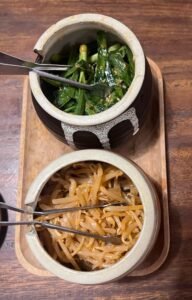
The condiments that come with the Ramen are also exceptional, and very typical of Tokyo-style Ramen shops, which leans toward a traditional Japanese service style that allows you to customize your bowl’s flavor balance. This combination (nira kimchi + moyashi) is especially popular in Kyushu-inspired tonkotsu Ramen places.
Top Jar: Nira Kimchi (ニラキムチ / Garlic Chives in Spicy Sauce)
-
Main ingredients: chopped garlic chives (nira), chili powder or gochugaru, sesame oil, garlic, soy sauce, and sesame seeds.
-
Flavor: spicy, garlicky, and aromatic.
-
Purpose: adds a punchy, umami-rich bite to ramen—especially good with tonkotsu (pork bone) broth.
-
Tip: a small spoonful into your ramen deepens the flavor; too much can overpower the broth.
Bottom Jar: Moyashi Itame (もやし炒め / Seasoned Bean Sprouts)
-
Main ingredients: blanched mung bean sprouts tossed with sesame oil, soy sauce, chili oil, and garlic.
-
Flavor: slightly salty, nutty, and crunchy.
-
Purpose: acts as a palate cleanser between bites, or you can add some directly into the ramen for texture.
Fresh Peeled Garlic Cloves

As a garlicoholic, it’s worth mentioning this jar of fresh peeled garlic cloves that’s on every table. There’s a garlic press right next to them too, and you can crush the garlic directly into your ramen.
I must confess – I always overdo it on the garlic, and I’m glad that Ajisai doesn’t shame me into asking for more, but instead offers garlic abundance by default. It just cuts through the fat and deepens the aroma, plus it obviously comes with a ton of health benefits.
Fantastic Miso Soup
Personally, I really love their miso soup – it’s different from the miso soup you typically get in Japanese restaurants here. I’m no expert on Japanese food, but from what I can tell, it has a much richer dashi base. They just add a deeper layer of umami. I think they use kombu and good quality bonito, which are these dried, smoked fish flakes. It really sets the miso soup apart.
Still not sure Which Ramen is right for you?
Pick base by mood:
- Heavy = White/Kuro/Aka
- Balanced = Shoyu/Shio
- Bright-savory = Niboshi/Kitakata
- “I want a project” = Tsukemen
Hope this helps 😉
And if you want to venture into non-Ramen land, there’s always the…
Lunch Menu

They also have a lunch menu where prices typically hover around 200 Baht (+/- 50 Baht or so, depending on which menu you choose). It comes with a main dish, rice, miso soup and condiments. We opted for the Chicken cutlet lunch set meal (#303, 189 Baht). (チキンカツ定食 / Chicken Katsu Teishoku). Now as mind-blowing as their ramen, but good for satisfying everyday lunch.
The hero here is Chicken katsu – breaded and deep fried chicken breast cutlet, crispy on the outside and tender on the inside, with a side of tonkatsu sauce (personally not a huge fan of the sweet-sour sauce), and a blob of mustard. The mustard was pretty weird though, had a less spicy and more earthy or almost “muddy” and dry taste, and a bit more of a subtle deep nasal heat (rather than sharpness on the tongue).
Steamed Japanese rice. A small salad, which was also was above the small salads Japanese restaurants typically serve! (I love it when restaurants overdeliver on these little side dishes that often don’t get the attention they deserve).
Tsukudani kombu (佃煮昆布)
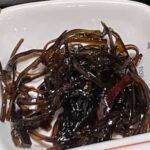
Another unexpected highlight here was the simmered kombo (kelp).
Thin strips of kelp are simmered in soy sauce, mirin, and sugar, until they become savory-sweet, and they become these umami-packed aside that’s a bit salty and sweet.
Think if the ocean made caramelized onions.
I’m always fond of tsukudani kombu, but here it was exceptionally delightful.
Vibe
Small, cozy, dimly lit, dark wood interior — feels a bit like an actual Tokyo neighborhood ramen-ya. Low-key and authentic. I like the vibe here, it’s much quieter than Bankara in Soi 39 (which I like too btw), and much much nicer than the Bankara branch in Siam Paragon for example, where I just hate the atmosphere.
If you want ramen that feels like it’s cooked by someone who actually cares about the broth — not the Instagram photo — Ramen Ajisai is worth your time.
Noteworthy: Happy-hour (17:00 – 19:00) Asahi draft 69 Baht and highballs 79 Baht.
Sorry, no records were found. Please adjust your search criteria and try again.
Sorry, unable to load the Maps API.




